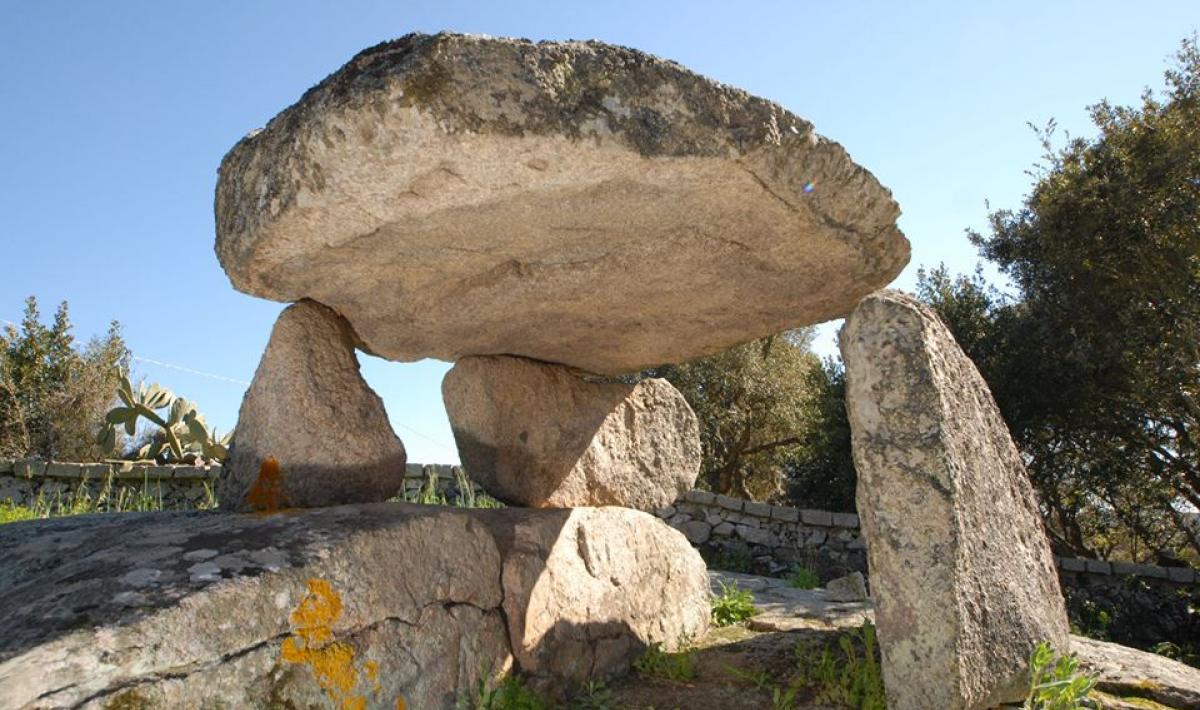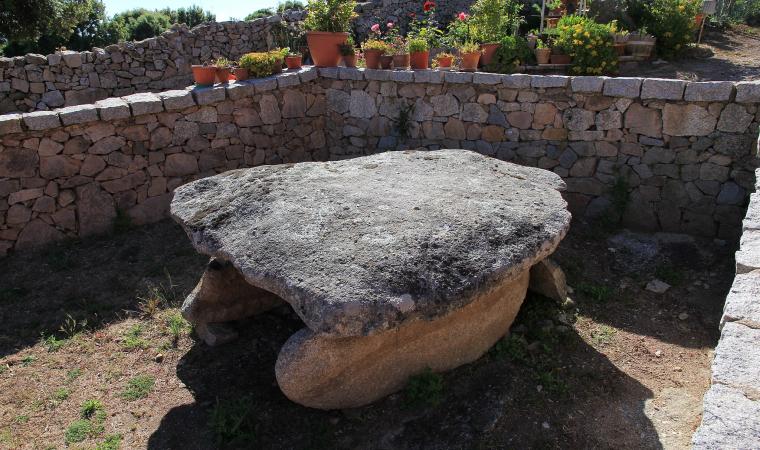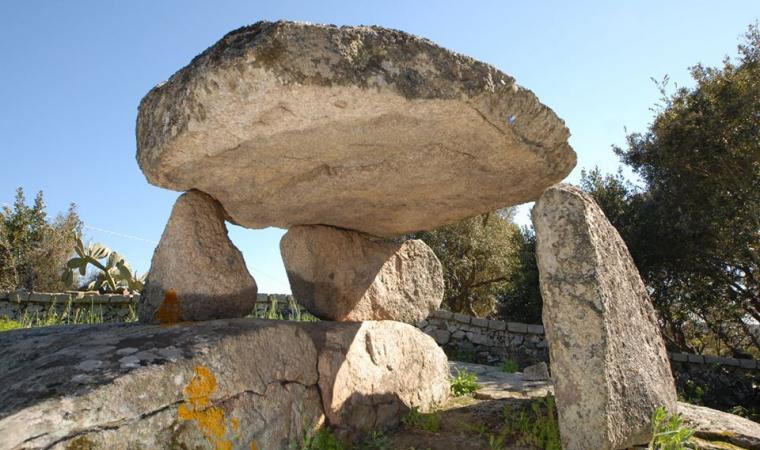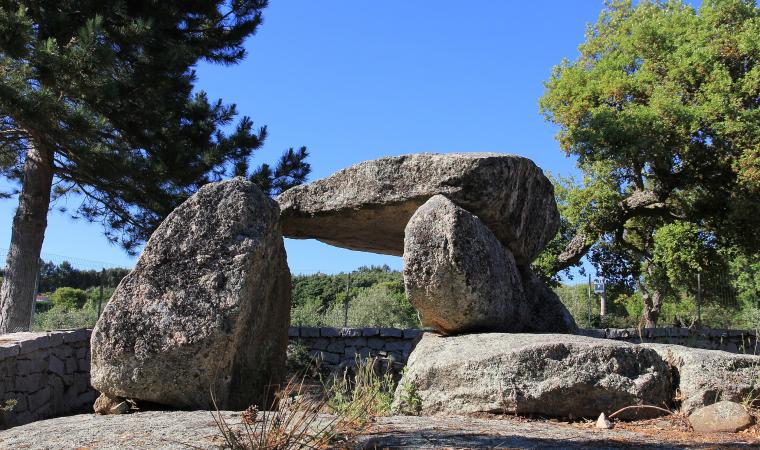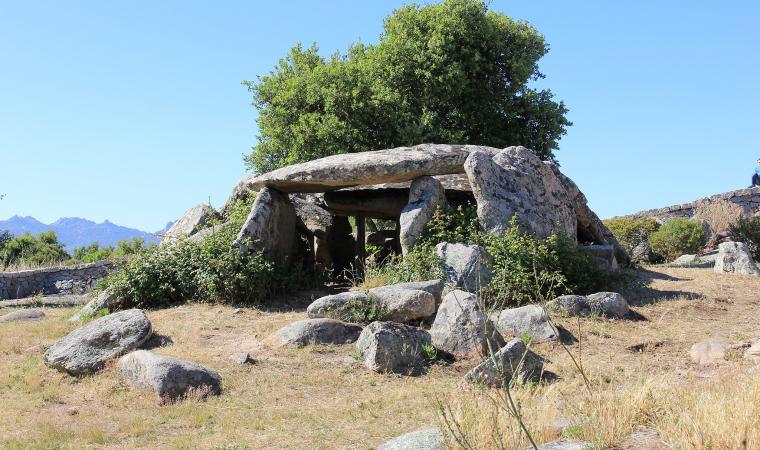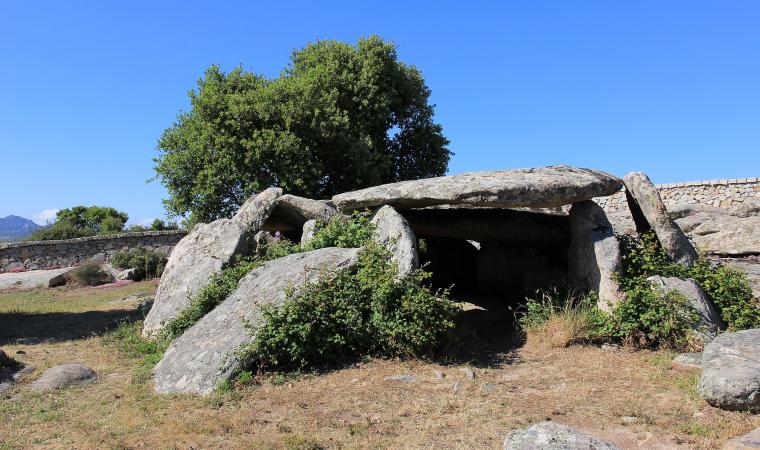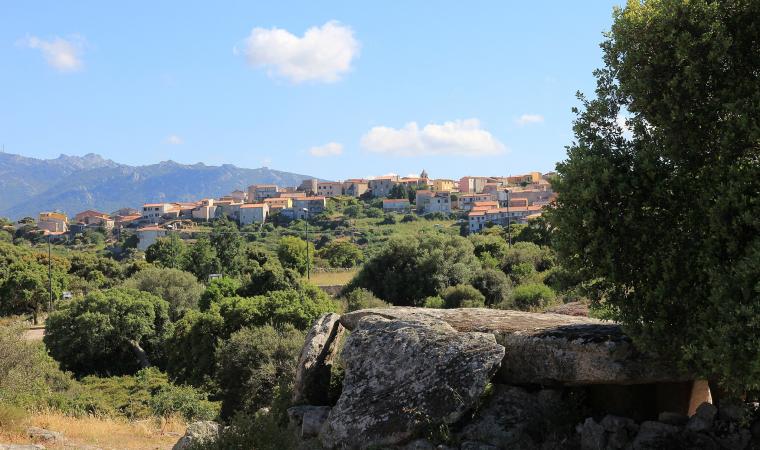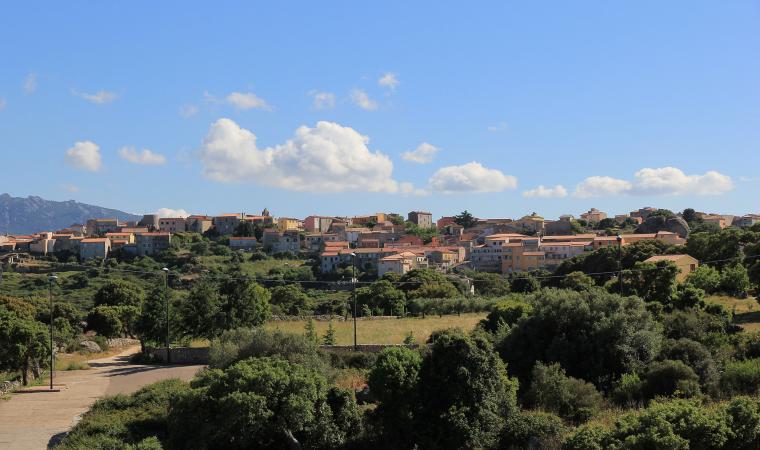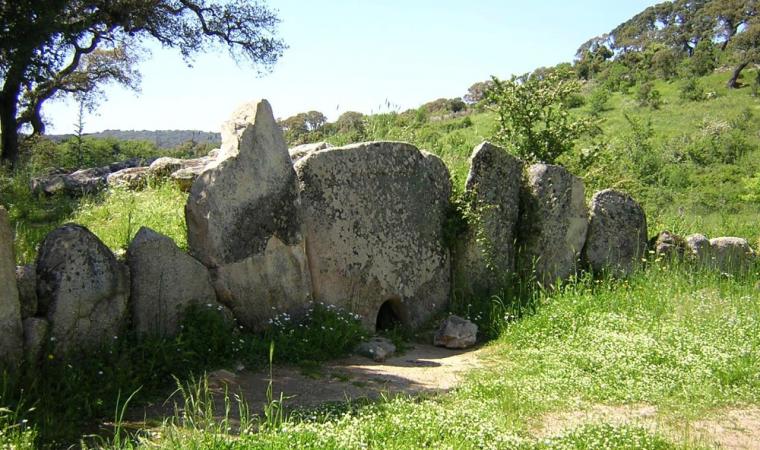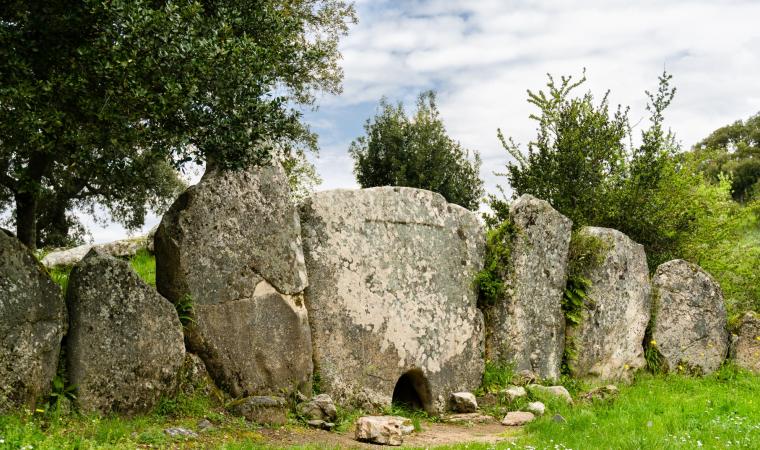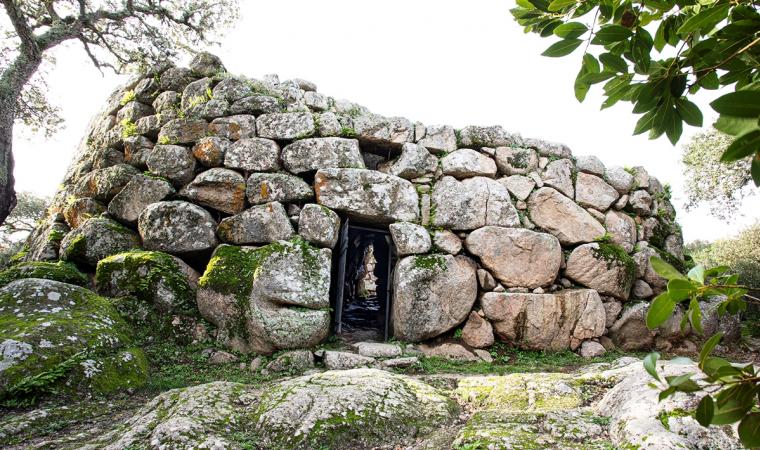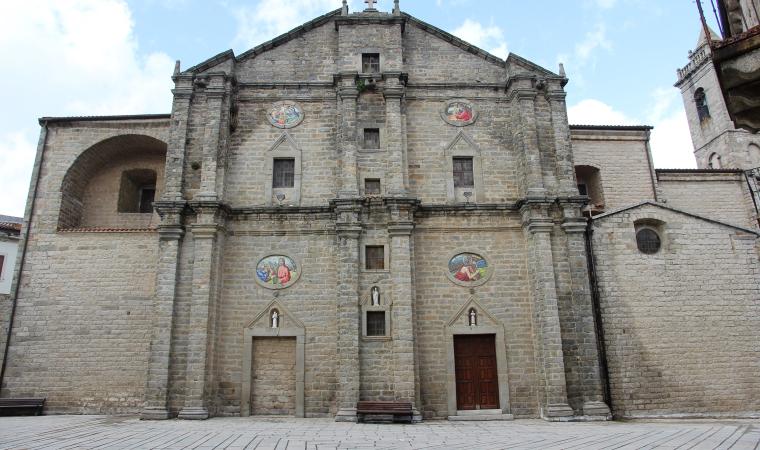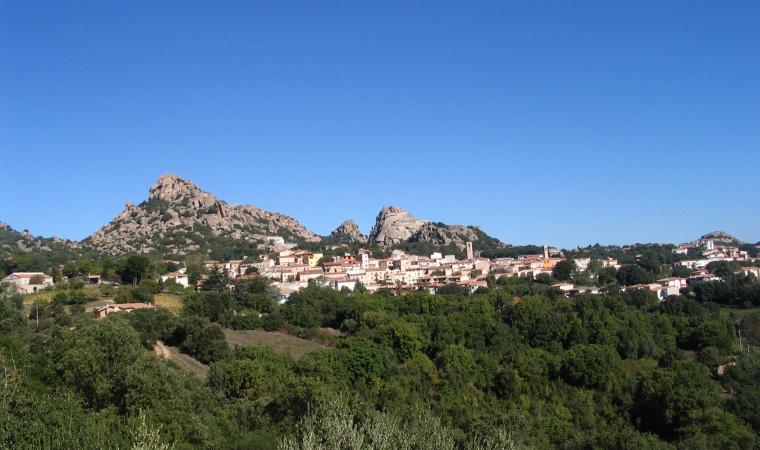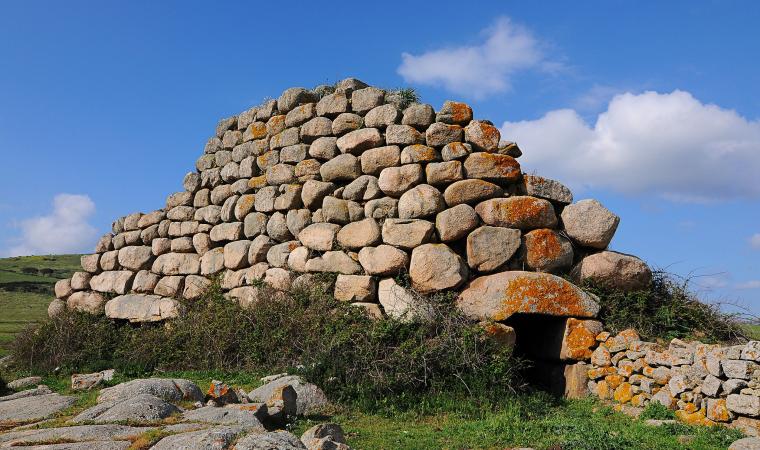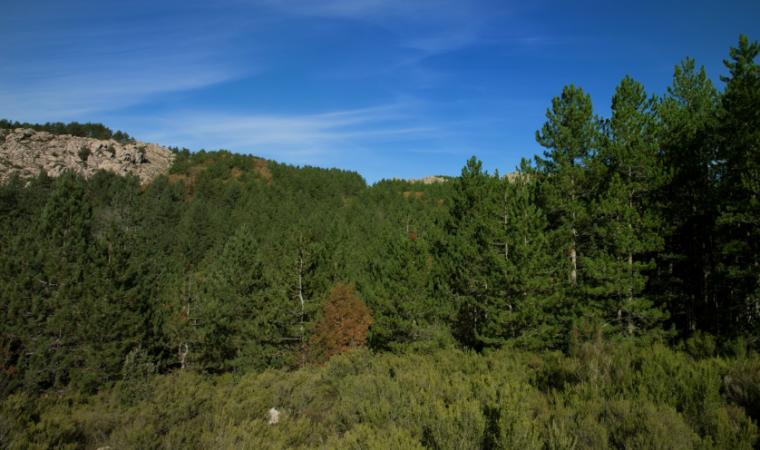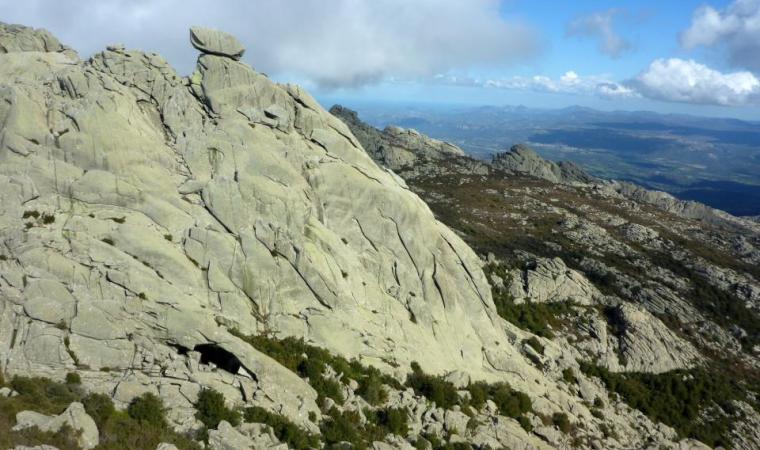Sepulturas de Zigantes or de paladinos, as the inhabitants of Luras called the dolmen (from the Breton tol-men, being stone table), the funerary monuments built as of the late Neolithic period (3500-2700 BC), are found in greater concentration in these areas than anywhere else on the island. Here there are four of the 78 in total in Sardinia, located within the town or in its immediate vicinity. There is the allée couverte di Ladas and the simple-structured dolmen of Alzoledda, Ciuledda and Billella. Made according to a trilithic system – horizontal slabs supported by other vertical ones – they served the function of collective burials and, together, of a place of worship, compared with similar examples of Basque, Catalan, French, Corsican and Menorca origin.
Set in a splendid natural setting, the allèe couverte di Ladas consists of a gallery extending six metres in length and more than two metres in height, covered by two large slabs and equipped with an apse. The backing stone has a surface of 15 square metres that has been worked and polished. The walls are formed of regular vertical slabs, flanked by flat masses arranged in obliquely. Next to this is the Dolmen di Ciuledda, similar to that of Ladas but with a semi-circular layout and with reduced dimensions, being less than a metre in height. Found in the two sepulchres were ceramic fragments attributed to the 3rd millennium BC. Both sites are located on granite bases, from which one’s gaze rises up to the massif of Limbara. The simple structure of the Dolmen di Alzoledda rises within the inhabited area, its rectangular form with a trapezoidal chamber more than two and a half metres long and more than one and a half metres in height. The side walls are comprised of slabs surmounted by supporting stones, whilst the back wall is a single flat orthostat protruding from the walls. Amongst the vermentino and nebiolo vineyards, the dolomen di Billella rises, with a rectangular layout, at a length of two and a half metres and a height of 80 centimetres. The right wall is a rectangular slab, the left one has two worked boulders resting on the rock - one having been artificially adapted for the addition of the roof slab that is flattened on the lower surface.
These prehistoric megalithic monuments have bought great fame to Luras. To these must be added the ruins of six nuraghe from the successive age, along with other natural and cultural attractions, starting from the thousand-year-old olive trees. Amongst the trees next to the church of San Bartolomeo di Karana, on the shores of the Lago di Liscia, are two whose age is estimated to be three-four thousand years, perched amidst the twenty century-old trees of Italy. At the centre of the village is the parish church of Nostra Signora del Rosario, which houses precious paintings, and the Galluras ethnographic museum, an expression of the ancient local culture, displaying the macabre hammer used by s'Accabadora (the ‘woman of death’) in acts of euthanasia ante litteram.

